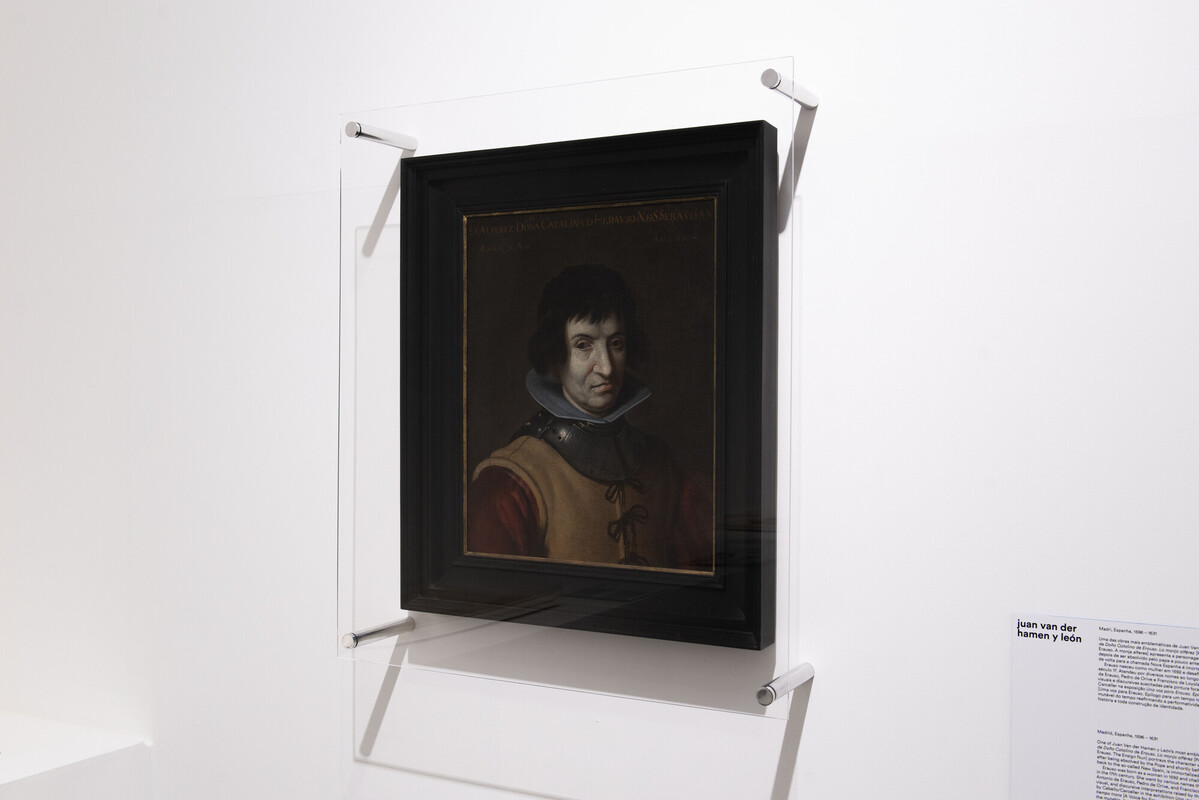
Juan van der Hamen y León
Between 1625 and 1628, after being absolved by the Pope and shortly before embarking on his return journey to the so-called New Spain, Antonio de Erauso was immortalized by Juan van der Hamen y León (Madrid, 1596–-1631) in the Retrato de Doña Catalina de Erauso. La monja alferez [Portrait of Doña Catalina de Erauso. The Nun Ensign].
Erauso, also known as “the lieutenant nun,”, was born as a woman in 1592 and defied gender norms in the 17th century. Until not so long ago, many scholars, probably influenced by the reading of Erauso’s biography, considered the painting to be part of the Baroque tendency to represent “the monstrous.”. This trend, which gave rise to a whole genre in itself, formed an amalgam that included bodies outside the norm and identities without a prefixed definition.
However, although such images were particularly abundant in the Spanish context in the first half of the 17th century, the Portrait of Doña Catalina de Erauso seems to question them on the basis of its own exceptionality. The particularity of the work makes even more sense when one considers that the writing that frames it – which establishes a clear dissonance between image and text, the reason why this anomaly was explained – was a later addition.
By reproducing the conventions of representation of “the masculine” of his time, Van Der Hamen’s composition of the character unwittingly contravenes the painting’s posthumous title. Dressed in military garb and holding a steady gaze, the image of the lieutenant unambiguously adheres to the dominant regime of visuality of the colonial era, with all its dictates around gender, sexuality, race, and class.
This constellation of interpretations, of visual and discursive appendices, has been recovered by Cabello/Carceller. In the exhibition Una voz para Erauso. Epílogo para un tiempo trans [A Voice for Erauso. Epilogue for a Trans Time], the work once again displays its mutable and exceptional character and, between past and present, confirms the performativity inherent in every portrait, every story, and every construction of identity.
beatriz martínez hijazo
translated from Spanish by ana laura borro
Juan van der Hamen y León (Madrid, Espanha, 1596 – 1631) was a Spanish painter, a master of still life paintings. He painted allegories, landscapes, and large-scale works for churches and convents. Today he is remembered mostly for his still lifes, a genre he popularized in the 1620s in Madrid, and the painting of Catalina de Erauso, also called Nun Alferez.

 Português
Português